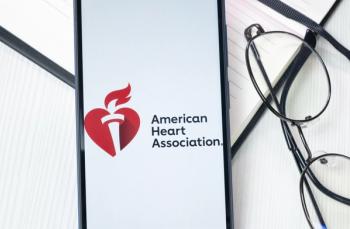
- Vol 38 No 3
- Volume 38
- Issue 03
Lung ultrasound: A useful tool for investigating bronchiolitis
A study examines whether using lung ultrasound would be an effective way to help diagnose bronchiolitis.
In a study in children hospitalized for acute bronchiolitis, findings of lung ultrasounds (LUSs) correlated with those of chest x-rays (CXRs), indicating that LUS is 1 valid technique for diagnosing and evaluating pediatric respiratory diseases.1 The longitudinal study was performed in 92 full-term infants aged younger than 12 months, 63 of whom were hospitalized for acute bronchiolitis, and 29 for non-respiratory diseases, serving as controls.
All participants with bronchiolitis underwent a clinical evaluation and were assigned a clinical severity score based on respiratory rate, arterial oxygen saturation in room air, presence of retractions, and ability to feed at hospital admission. Participants also were assigned an LUS score based on the LUS they received within the first 24 hours of admission. The LUS probe was placed vertically, obliquely, and horizontally to the ribs in 3 chest projections: anterior, lateral, and posterior. Sonographers viewed the LUSs primarily for B-lines and subpleural consolidation. A posterior-anterior CXR was performed in 23 of the 63 children in the study group to determine the presence or absence of patchy consolidations, diffuse air trapping, and confluent opacities. Demographic, clinical, and laboratory data also were collected for all patients.
Investigators found a significant correlation between clinical severity score and LUS score, as well as a positive correlation between LUS score and days of hospitalization. In addition, patients with higher LUS scores were most likely to require oxygen therapy. LUS findings were lung B-lines, subpleural consolidation, and abnormalities of the pleural line. Lung B-lines, in particular confluent B-lines, were most frequently seen in LUS posterior projection. Subpleural consolidations were present in 54 infants, most often the multiple forms or consolidation. Finally, 13 infants had pleural line abnormalities. In comparing CXR and LUS results, investigators noted a concordance in findings of subpleural lung consolidations as well as a significant correlation between abnormalities of the pleural line and air trapping.
Thoughts from Dr. Farber
Once again, the ultrasound demonstrates that it can provide a valuable diagnostic tool in a number of areas, whose advantages include its ability to be used at the bedside and being radiation free. However, before you get too excited about the idea of using this routinely in children with bronchiolitis, look at the next abstract.
Reference
1. La Regina DP, Bloise S, Pepino D, et al. Lung ultrasound in bronchiolitis. Pediatr Pulmonol. 2021;56(1):234-239. doi:10.1002/ppul.25156
Articles in this issue
almost 5 years ago
The latest Rx for sickle cell and oncologyalmost 5 years ago
The road to normalalmost 5 years ago
Seasonal allergies: What every pediatrician needs to knowalmost 5 years ago
Adolescent in detention center presents with hallucinationsalmost 5 years ago
Disseminated erythema migrans as a result of Lyme diseasealmost 5 years ago
Picky eating: When is the time to act?almost 5 years ago
Making a diagnosis when labs and clinical findings don’t correlatealmost 5 years ago
Can you really diagnose RSV based on how the cough sounds?Newsletter
Access practical, evidence-based guidance to support better care for our youngest patients. Join our email list for the latest clinical updates.








